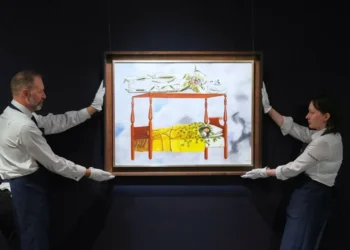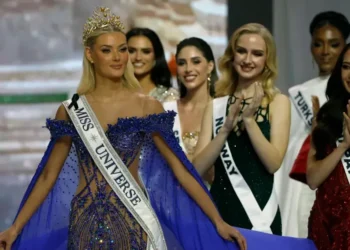Move, Cheer, Dance: Unlocking the Power of ‘We Mode’ for Collective Joy
Researchers say participating in group activities—from fire-walking festivals to sports events—triggers “we mode,” a shared physiological and emotional experience. Experts highlight ways to tap into this collective joy to enhance well-being and social bonds.
The Science Behind Collective Joy
In San Pedro Manrique, Spain, residents annually walk across hot coals while crowds cheer, a ritual that sparks feelings of intense togetherness. Observers and participants alike report a shared sensation, as if the group itself becomes one entity. Cognitive anthropologist Dimitris Xygalatas of the University of Connecticut describes this phenomenon as “collective effervescence,” a concept first studied by French sociologist Emile Durkheim over a century ago.
Xygalatas has witnessed similar experiences in sports stadiums, where fans chanting and cheering in unison report comparable feelings of connection. “These are moments when individual emotions converge, creating a shared, contagious energy,” he said.
Physiological Synchrony and ‘We Mode’
The shared experience of collective joy, also referred to as physiological synchrony, can have measurable effects on the body. Researchers like Xygalatas have monitored participants’ heart rates and facial expressions during rituals and sports events. Results show that people’s physiological responses synchronize, from heartbeats to endorphin levels. Fans attending games in person experience stronger synchronization than those watching remotely, demonstrating the unique effect of shared physical presence.
Stanford University health psychologist Kelly McGonigal calls this shared state “we mode,” where positive emotions become infectious. “Expressions often act as aerosolized joy,” she explained. “You catch other people’s smiles, laughter, and energy, which amplifies your own feelings of happiness.”
Why Participation Matters
To experience collective joy fully, active engagement is essential. Passive observers rarely achieve the same effect. McGonigal notes that moving, cheering, clapping, or singing amplifies the emotional impact. Physical presence and interaction allow signals to transmit among participants, creating the shared state that underpins “we mode.”
Dimitris Xygalatas emphasized the importance of synchrony in rituals: “When we dress alike, move alike, and feel alike, our brain mechanisms for emotion and bonding are triggered.” He adds that shared activities are crucial for psychological well-being, providing a sense of belonging and connection.
Activities That Encourage ‘We Mode’
Experts suggest several types of group experiences that naturally foster collective joy:
Physical Group Activities
Exercise classes, team sports, and dancing encourage movement and social interaction. The more participants move together, the stronger the physiological and emotional synchrony.
Vocal Expression
Cheering, chanting, or singing in unison creates emotional resonance. Large crowds at concerts or sports events often report heightened excitement and shared euphoria.
Rituals and Festivals
Cultural or religious events, such as fire-walking ceremonies or processions, produce intense collective effervescence. Shared risk, anticipation, and celebration amplify the sense of unity.
Letting Go of Self-Consciousness
Engagement requires participants to set aside embarrassment and immerse themselves in the activity. “You’ve got to do the wave at a sporting event or shout in unison during a class,” McGonigal said. Active participation is key to tapping into the full effect.
Practical Benefits of ‘We Mode’
Research indicates that experiences of collective joy boost psychological and physical health. Participants often report increased happiness, reduced stress, and stronger social bonds. Endorphin release during synchronized activity reinforces these positive effects, fostering both individual and communal well-being.
McGonigal highlights that cultivating “we mode” in daily life can enhance resilience and emotional health. Whether attending a local sports game, joining a dance class, or participating in community rituals, shared activity provides tangible benefits beyond momentary excitement.
Harnessing Collective Joy Safely
While large group events can spark powerful experiences, experts recommend mindful engagement. Focus on in-person interactions, prioritize inclusivity, and ensure physical safety during active participation. The goal is a sustainable sense of connection, rather than fleeting exhilaration.
By intentionally participating in shared activities that combine movement, vocal expression, and presence, people can tap into “we mode” regularly, creating a recurring source of joy and connection.
This article was rewritten by JournosNews.com based on verified reporting from trusted sources. The content has been independently reviewed, fact-checked, and edited for accuracy, neutrality, tone, and global readability in accordance with Google News and AdSense standards.
All opinions, quotes, or statements from contributors, experts, or sourced organizations do not necessarily reflect the views of JournosNews.com. JournosNews.com maintains full editorial independence from any external funders, sponsors, or organizations.
Stay informed with JournosNews.com — your trusted source for verified global reporting and in-depth analysis. Follow us on Google News, BlueSky, and X for real-time updates.













